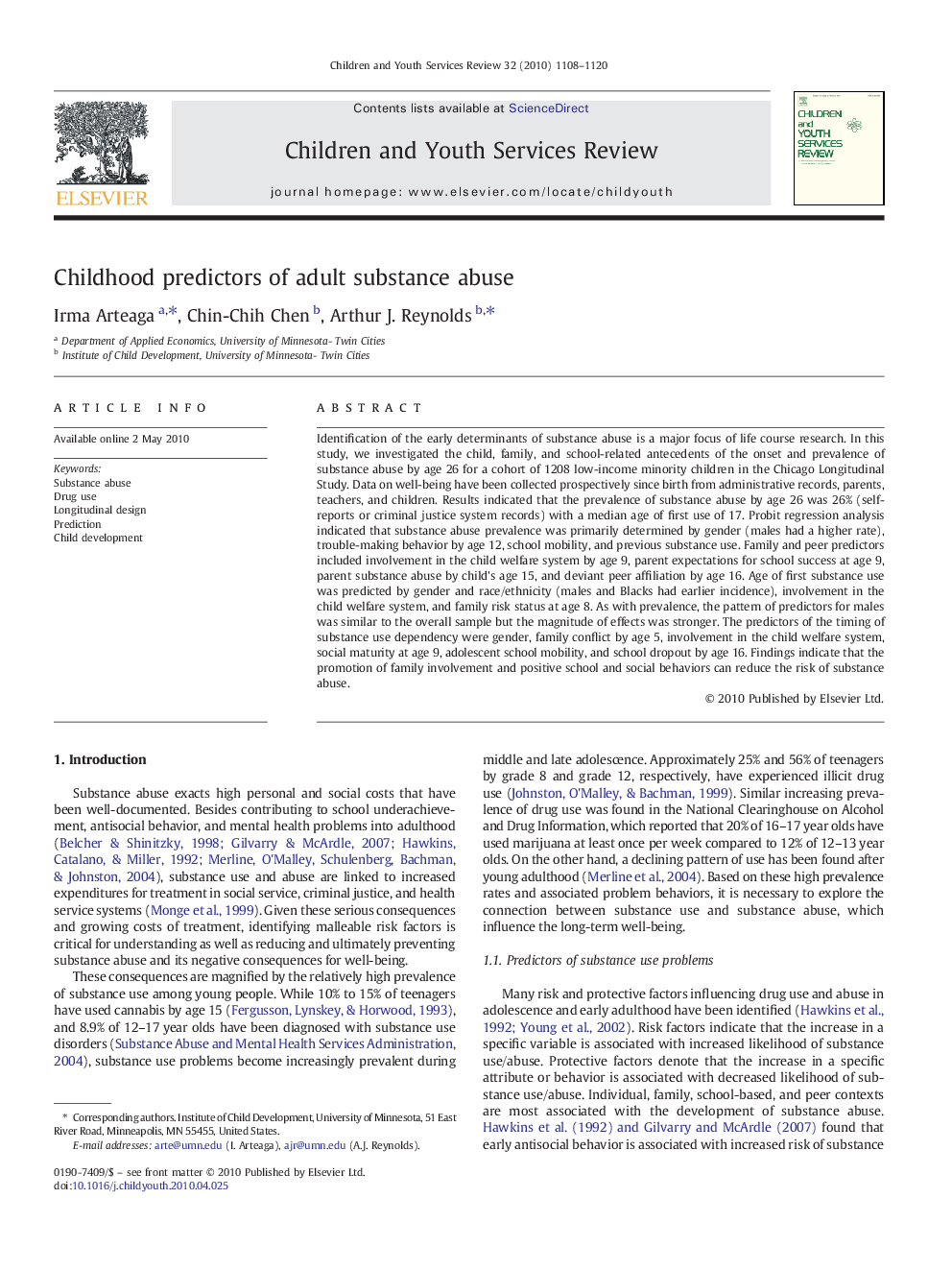| Article ID | Journal | Published Year | Pages | File Type |
|---|---|---|---|---|
| 346640 | Children and Youth Services Review | 2010 | 13 Pages |
Identification of the early determinants of substance abuse is a major focus of life course research. In this study, we investigated the child, family, and school-related antecedents of the onset and prevalence of substance abuse by age 26 for a cohort of 1208 low-income minority children in the Chicago Longitudinal Study. Data on well-being have been collected prospectively since birth from administrative records, parents, teachers, and children. Results indicated that the prevalence of substance abuse by age 26 was 26% (self-reports or criminal justice system records) with a median age of first use of 17. Probit regression analysis indicated that substance abuse prevalence was primarily determined by gender (males had a higher rate), trouble-making behavior by age 12, school mobility, and previous substance use. Family and peer predictors included involvement in the child welfare system by age 9, parent expectations for school success at age 9, parent substance abuse by child's age 15, and deviant peer affiliation by age 16. Age of first substance use was predicted by gender and race/ethnicity (males and Blacks had earlier incidence), involvement in the child welfare system, and family risk status at age 8. As with prevalence, the pattern of predictors for males was similar to the overall sample but the magnitude of effects was stronger. The predictors of the timing of substance use dependency were gender, family conflict by age 5, involvement in the child welfare system, social maturity at age 9, adolescent school mobility, and school dropout by age 16. Findings indicate that the promotion of family involvement and positive school and social behaviors can reduce the risk of substance abuse.
